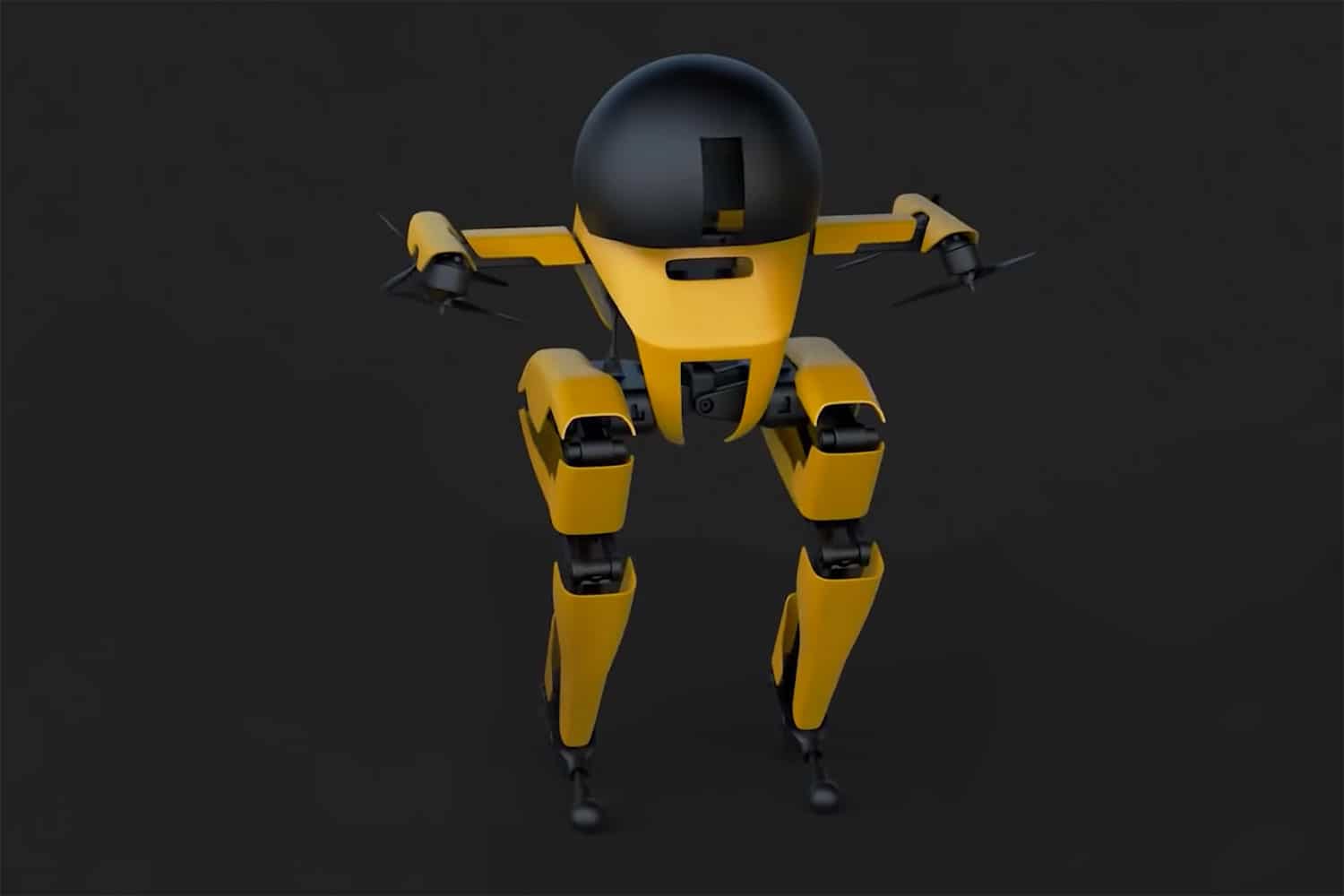
We have already seen a variety of robots like the ones that can be your companion or pet, inspection robots, and ones that can even dance. But most of them are stuck with one type of movement – they can either fly, swim, walk, or drive across the ground.
Now, researchers at Caltech have built a bipedal robot, called LEONARDO (short for LEgs ONboARD drOne, or LEO for short), that combines walking with flying to create a new type of locomotion, making it exceptionally nimble and capable of complex movements.
Caltech describes LEONARDO as a part walking robot and a part flying drone as it can walk a slackline, hop, jump, and can even ride a skateboard. While this sounds impressive, the robot’s insect-like design and sudden switch to flying can definitely scare anyone. LEO is also said to be the first robot that uses multi-joint legs and propeller-based thrusters to achieve a fine degree of control over its balance.
LEO stands 2.5 feet tall and is equipped with two legs that have three actuated joints, along with four propeller thrusters mounted at an angle at the robot’s shoulders, which not only help correct its stance but let it take to the skies to leap over rough terrain, stairs or other obstacles. The bipedal robot walks as if wearing high heels, but these heels allow for a balanced stance.
“We drew inspiration from nature. Think about the way birds are able to flap and hop to navigate telephone lines,” says Soon-Jo Chung, corresponding author of the paper and Bren Professor of Aerospace and Control and Dynamical Systems. “A complex yet intriguing behavior happens as birds move between walking and flying. We wanted to understand and learn from that.”
Next, the team plans to improve the performance of LEO by creating a more rigid leg design that can support more of the robot’s weight and help increase the thrust force of the propellers that it uses to fly. In addition, they hope to make LEO more autonomous so that it can understand how much of its weight is supported by legs and how much needs to be supported by propellers when walking on uneven terrain.
In addition to this, the bipedal robot is also expected to be equipped with a newly developed drone landing control algorithm that utilizes deep neural networks. This will help the robot make its own decisions about the best combination of walking, flying, or hybrid motion that it should use to move from one place to another based on what is safest and what uses the least amount of energy.
Along with the combined strength of walking and flying, the team hopes to enable a wide range of robotic tasks, such as high line voltage control and high deck monitoring. These robots can inspect ancient infrastructure, work in disaster scenarios, and even explore distant worlds. The team also envisions the robots like LEO to be used on the surface of Mars that has rough terrain as they can achieve a balanced landing on sloped or uneven terrains, thereby reducing the risk of failure.
Meet LEONARDO, a bipedal robot that can fly, walk, and skateboard
Source: Tambay News

0 Comments